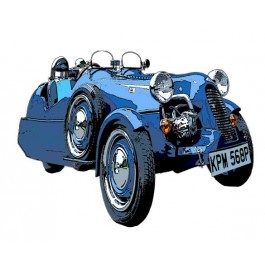|
|
Appraisal GuidelinesDescriptionDetermining value:Describe the resources that were used in determining the value. Describe any rating system used. The appraisal should provide a minimum of three comparables of like or similar units that are located in the same geographic area in order to substantiate the appraised unit’s market value. A complete set of color photographs of the unit to include exterior, interior, engine compartment and any attached equipment (floats, plow blades, etc.). Pictures should be from various angles and include the underside of the unit. General information: Complete unit description to include accessories and add-ons. Include all serial or VIN. If applicable, do the serial numbers of the engine match the chassis? Specifications of the unit such as the size of the unit and the size of the engine(s). Commonality of the unit to the geographic region in which it will be used. The appraiser should take into account if the geographic region in which the unit is to be used would affect the value. Is the unit designed to be used and/or kept in the intended area? Is the unit in original condition, or has it be restored? If the unit has been restored, when and who performed the restoration and what were their qualifications? Is there any documentation, i.e. build sheet, window sticker, maintenance records, copy of previous titles from previous owners? If any of these documents exist, please expect to provide them. If it is a collectors unit, how many units were originally produced? How many are known to still be in existence? If the ownership history is known, or if the unit has some sort of historical value, provide this information. Design of unit: Is this unit’s original purpose for pleasure or commercial use? Has the unit ever been used commercially? Was the unit manufactured by a nationally recognized company? If not manufactured by a nationally recognized company, did the appraiser inspect the unit’s design specifications and does the unit meet the architectural or builder’s specifications? Has the unit ever been modified? If so, list the modifications and if those modifications add or detract from the value of the unit. Systems: All propulsion systems are to be tested and certified by the appraiser to determine they are in good operational condition for use. Types of engines. Engine condition: What is the manufacturer’s expected life of similar make, model and year? Number of remaining years or hours before replacement under normal recreational or commercial use. Compression of the engine cylinders. If engine/propulsion systems have been replaced, are replacement(s) similar to the original(s) recommended by the manufacturer? If not similar, provide an explanation of the difference. Was any work performed by a certified technician or does the work meet standards established for such work? Transmissions. Transmission hours. Manufacturers expected life under normal use. Number of years or hours before replacement under normal use. If the transmission has been replaced, is replacement similar to the original(s) recommended by the manufacturer? If not, provide an explanation of the difference. Was the work performed by a certified technician or does the work meet standards established for such work? Electronics. List of all electronics. Are the electronics operational and in good condition? Do all the electronics and wiring meet or exceed U.S. engineering requirements? Condition and superstructure: The appraiser is to provide condition of the exterior, interior and superstructure/chassis of the unit. Any deficiencies and their estimated cost of repair should be noted. Does the unit’s integrity meet all the U.S., state government and manufacturer’s design specifications? Has the unit been modified or changed from the original manufacturer’s design? If so, describe the modifications and list how it may affect the unit in any way. Has a hazard occurred since the unit has been place in service? If so, describe the damage and determine if the unit was repaired to the manufacturer’s original specifications. Safety/Lifesaving equipment: List of all safety and lifesaving equipment. Does the equipment meet or exceed U.S. or state government requirements? If required, are the fire extinguishers current? Are there any vapor detectors, alarms, or emergency locator beacons, and are they operational? Findings and recommendations: A complete list of deficiencies. Color photographs of damaged areas. Estimated cost of repair or replacement for any findings or recommendations. Appraiser’s notes and observations. Dated and signed by the appraiser. Detailed Information
|









